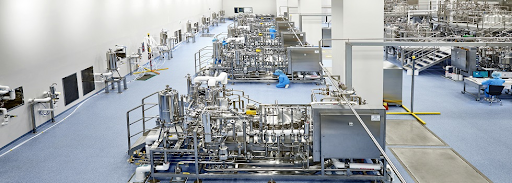Cell line development has emerged as a vital process shaping the trajectory of drug discovery and manufacturing. Using living cells grown in the lab, contract development and manufacturing organizations can now produce high volumes of antibodies and other proteins that serve as the active ingredients in medicines treating everything from heart disease and cancer to autoimmune disorders.
Understanding the nuances of how this process works — as well as the role of CDMOs — provides a window into the future of not just the biologics industry, but the pharmaceutical industry as a whole, as biologics are one of the broader industry’s fastest-growing sectors. The biologics industry’s growth is a reflection of the shift toward the more personalized, targeted therapies that biologics offer, particularly in areas like oncology and chronic disease management.

Innovations in sectors such as mRNA, antibody-drug conjugates, and monoclonal and bispecific antibodies are pushing the limits of what’s possible in the development and manufacturing of life-saving therapeutics, and cell line development has a big part to play in the advancement of these relatively new therapeutic technologies.
How Cell Line Development Works
Cell line development involves the creation and optimization of cell cultures used to produce biopharmaceuticals, including monoclonal antibodies, vaccines, and recombinant proteins. It’s a meticulous process, encompassing the selection of a suitable host cell, genetic modification to produce the desired protein, and optimization of growth conditions to ensure high yield and stability of the product.
The host cell is often mammalian, like the Chinese hamster ovary cell. These cells aren’t directly taken from live hamsters; they’re grown and cultivated in laboratories from a basis of an existing CHO line. CHOs present several advantages: They adapt well to various culture conditions, exhibit stable gene expression, and have a propensity for proper folding and post-translational modifications of proteins, which are crucial for the biological activity of many therapeutic agents.
Once a host cell is identified, it can be genetically modified to produce a specific protein. The growth conditions of these cells are optimized to maximize protein yield. The process involves screening and selecting the most productive cell clones and then scaling up the production in bioreactors. Finally, the desired protein is harvested and purified, ensuring that it meets stringent quality control and regulatory standards. This process is essential for the efficient and safe production of biopharmaceuticals.
CDMOs are pivotal in expediting and enhancing cell line development. They offer specialized expertise, state-of-the-art facilities, and scalable solutions, thereby reducing time-to-market for new therapies. CDMOs provide an array of services, from cell line construction and screening to process development and scale-up. Relatively recent advancements, such as the use of CRISPR/Cas9 for gene editing, and automation and high-throughput techniques used in screening clones, have significantly improved the efficiency and reliability of the process.
“An early-stage assessment tool can mitigate development risk and help minimize scale-up risk by facilitating the identification of potential issues — as well as informing the development of strategies to address them — before those issues become major problems,” wrote Derrick Katayama, lead scientist in formulation development, and Heonchang Lim, director of formulation development at CDMO Samsung Biologics, in a recent white paper. “This process also is conducive to developing a more effective drug product.”
Therapeutic Prospects and Economic Impact
The future of cell line development seems poised for groundbreaking developments.
It’s a process central to several fast-evolving therapeutic technologies, including cell, gene, and RNA therapies. These therapies offer transformative treatment approaches for diseases previously considered incurable. For instance, CAR-T-cell therapies have shown promising results in treating certain blood cancers. Gene therapies have also demonstrated long-term efficacy in treating spinal muscular atrophy in babies and for the treatment of severe hemophilia A.
Innovations in cell line development have also extended to the realm of oncology, metabolic diseases, and neurology. The interest in metabolic diseases is particularly notable, with significant research directed toward conditions such as nonalcoholic steatohepatitis, amyloidosis, and diabetes.
The economic impact of cell line development is also expected to be substantial, given its crucial connection to the growing biologics market, which is notably outpacing the broader pharmaceutical industry. A recent report found that in 2023, the biologics market size was expected to total more than $401 billion, and it is projected to grow at a compound annual growth rate of 6.96%, reaching over $562 billion by 2028. This growth is attributed to several factors, including rising capital investment from key market players, an increase in the prevalence of chronic diseases, and a growing demand for innovative therapies.
Another report found that the monoclonal antibodies segment, in particular, dominates the biologics market, accounting for a share of more than 66% in 2022.
Despite the promising therapeutic potential, there are challenges in manufacturing and accessibility that the industry is addressing. Innovations in biomanufacturing, such as automated, closed bioreactors and suspension cultures, are improving production efficiencies, and the use of artificial intelligence and machine learning in cell line selection and media optimization is expected to lead to higher quality and more consistent products